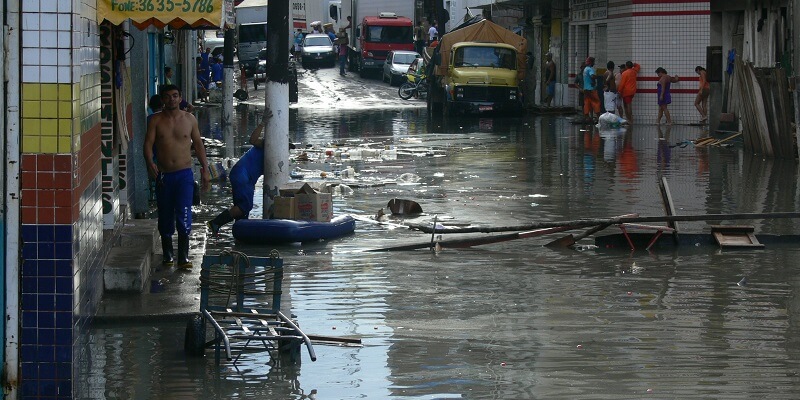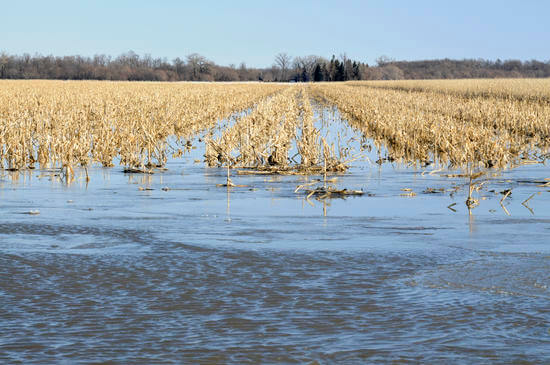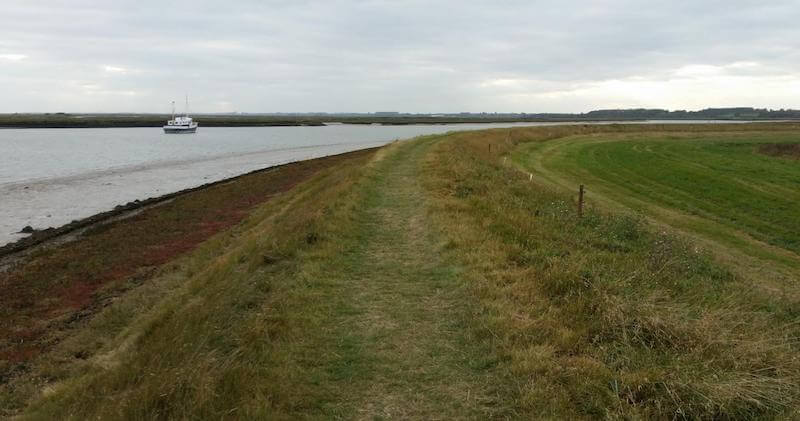Floods are destructive, devastating and the most common natural disaster. All year round they storm through cities and crop fields tearing up trees, destroying buildings, causing millions of dollars in damage, and killing people and animals.
The number of floods worldwide have quadrupled since 1980 and doubled since 2004.
In 2017, alone, flooding caused more than $3 billion in property damage and killed 25 people in the U.S.
Many unavoidable occurrences, such as heavy rainfall and melting snow, can cause flooding, but carbon emissions and human alteration of land are causing them to happen more frequently.
Recent studies point to an increase in the amount of floods, worldwide.
Here are some of the dangers we face.
Amazon River is flooding five times more often
Researchers from the University of Leeds, UK, and Universidad Austral de Chile, recently analyzed 113 years of daily-recorded water levels of the Amazon River in Manaus City, Brazil and determined that flooding occurs five times more often than it used to.

In the beginning of the 20th century, severe floods with water levels over 95 feet, which is the standard for a state-of-emergency in Manaus City, occurred nearly every 20 years. Now those floods happen every four years.
“What really stands out from this long-term river record is the increase in the frequency and severity of the floods,” lead author Jonathan Barichivich from Universidad Austral de Chile – and a former research fellow at the University of Leeds — said in a statement.
“With a few minor exceptions, there have been extreme floods in the Amazon basin every year from 2009 to 2015,” he continued.
The flooding is primarily caused by a difference in temperature and pressure between the tropical oceans.
“This dramatic increase in floods is caused by changes in the surrounding seas, particularly the Pacific and Atlantic oceans and how they interact,” Manuel Gloor, a professor from the School of Geography at The University of Leeds and co-author of the study, said in a statement.
“Due to a strong warming of the Atlantic Ocean and cooling of the Pacific over the same period, we see changes in the so-called Walker circulation, which affects Amazon precipitation,” he continued.
Of course, human-induced climate change is at least partially responsible.
Changes in soil could cause flash flooding and erosion
A study from University of California Riverside predicts there will be more flash floods and soil erosion in the future because climate change is causing there to be fewer pores in soil.
Macropores, which are larger than 0.009 mm in diameter, are holes in the dirt that allow for water to be absorbed.
They serve an essential role in our ecosystems. Without them, plants wouldn’t be able to receive the water and nutrients they need for survival.

“It is important to predict the response of macroporosity to climate change because of its role in the water cycle, and ultimately in water scarcity, food security, human health and loss of biodiversity,” Daniel Hirmas, an associate professor in the Department of Environmental Sciences at UC Riverside and lead author of the study, said in a statement.
The researchers predict that increased humidity will cause there to be reduced soil macroporosity in most regions in the U.S. by 2080 to 2100.
Less water will soak into the ground, and that will cause there to be more surface runoff, erosion and flash flooding.
Global wetlands must relocate
New research led by the University of Lincoln, UK, shows that wetlands could be safe from climate change-induced sea-level rise if they are moved further inland.
Past predictions claim that the world could expect wetland losses of up to 90 percent, but the new study shows that wetland gains of up to 60 percent are possible if the right actions are taken.

“Rather than being an inevitable consequence of global rising sea levels, our findings indicate that large-scale coastal wetland loss might be avoidable if sufficient additional space can be created by increasing the number of innovative ‘nature-based adaptation’ solutions to coastal management,” Mark Schuerch, a senior lecturer of physical geography at the University of Lincoln and lead author of the study, said in a statement.
“These enable coastal wetlands to migrate inland through displacement of coastal flood defences and the designation of nature reserve buffers in upland areas surrounding coastal wetlands,” he continued. “If these are strategically scaled up they could help coastal wetlands adapt to rising sea levels and protect rapidly increasing global coastal populations.”
Saving the world’s wetlands is imperative in the efforts to slow down global warming, for they help to remove carbon dioxide from the atmosphere. They also are an important shield to prevent inland flooding from storm surges.
For wetlands to be saved, of course, public policy must be made that is geared to upscale restoration.
Need for action
Climate change already has the world underwater, and it can get worse.
But humanity has an opportunity to reverse this trend by taking a unified stand against climate change and working to make adjustments to save land from rising temperatures and sea-level rise.
However, everyone must act now. There is no longer any time to wait.



